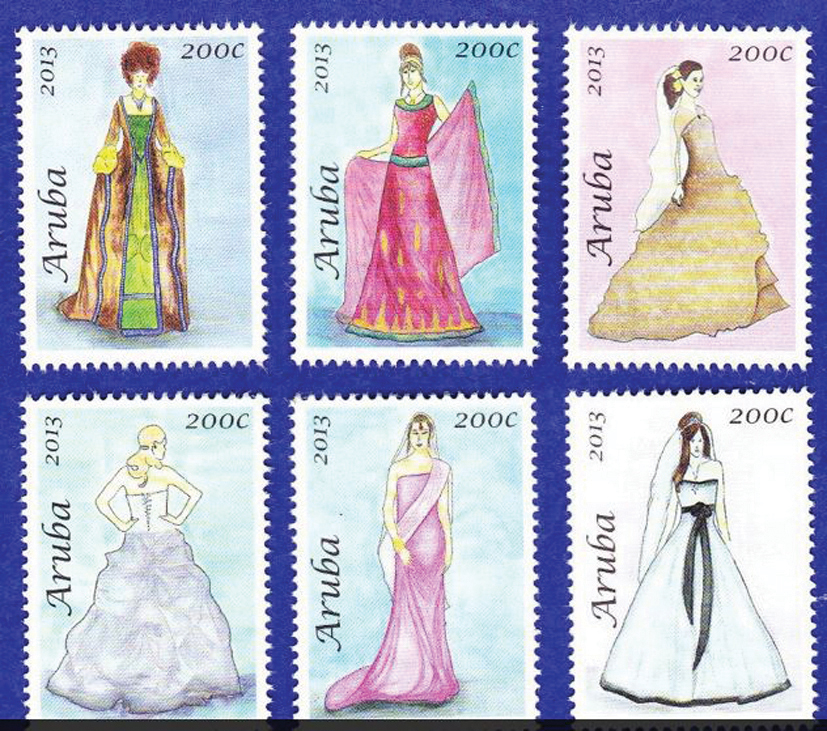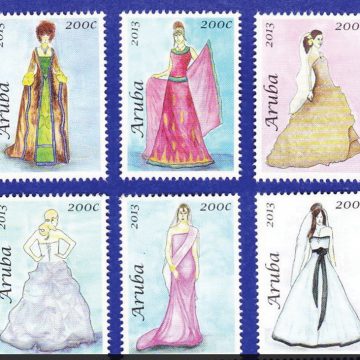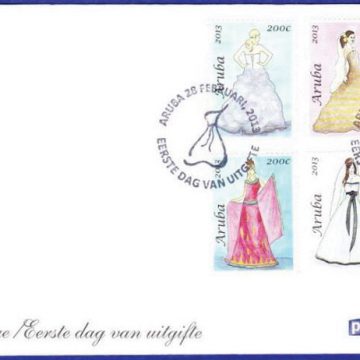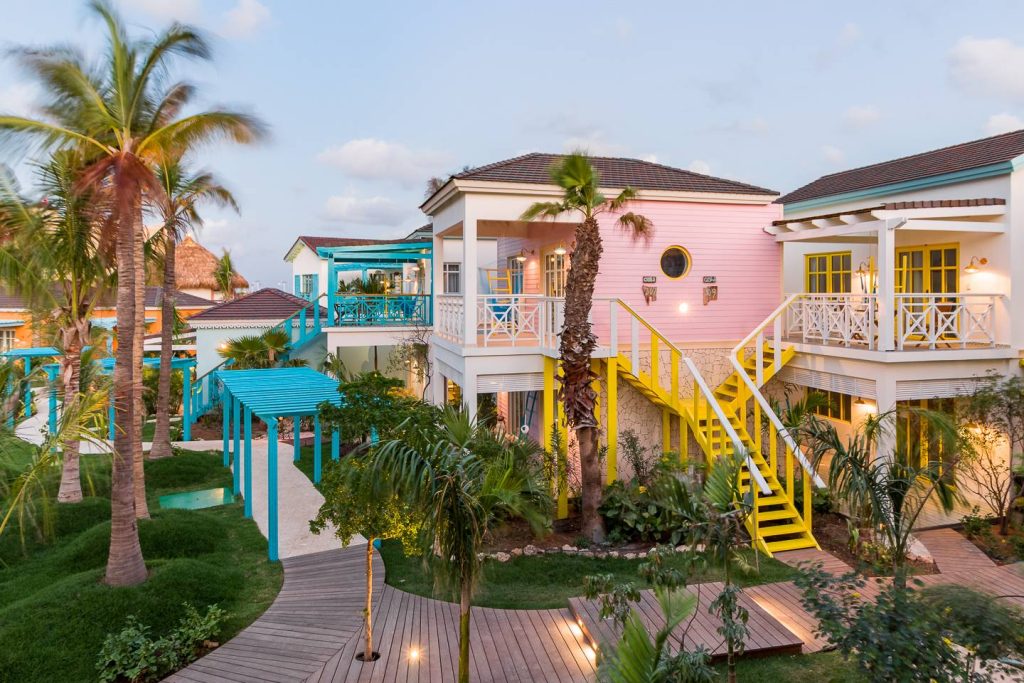Courtesy of: The Morning News
By: Rosalie Klein
Though issued in February, this is a time when young people’s thoughts turn to romance and marriage, and the Wedding Dress 2013 commemorative set from Post Aruba could not be more appropriate. Six stamps of 2.00 Aruban florins each ($1.15 U.S.) by island artist Stephanie Croes features marriage gowns both contemporary and traditional, in elegant, fashion-designer styled artworks.
“Color, style and ceremonial importance of the dress can depend on the religion and culture of the wedding participants,” cited Ms. Croes in her inspiration for the individual dresses. They capture the fashion statement for a variety of times, in what was the most important dress a woman would wear, on what is often considered the most significant day of her life. Wedding dresses were meant to make the bride the star of the show.
The six dresses in this commemorative issue are:
Victorian marriage dress (Brown & green): The Victorian era of British history was named for Queen Victoria’s reign (1837-1901). The marriage dress during this period was characterized by varying choices of lace, colors and detailed fabrics. A large amount of fabric was used to cover hoops to create a full skirt. A small bodice was used to emphasize a small upper body silhouette for the bride.
Long sleeves were used along with gloves covering the fragile hands of the bride-to-be, leaving only a small portion of the ring finger uncovered for the ceremony. Colors used during this era represented the mood and the future of the marriage. The color green represented the thought of shame to be seen on the first night of her honeymoon indicating her purity on her wedding night. The jewelry used during this Victorian Era were usually large pieces with diamonds and gemstones to reflect the status and wealth of the family.
Modern Victorian Inspired marriage dress (Grey): A Victorian wedding is about class, grace and an immense amount of romanticism, captured in every baroque detail. The extravagant amount of fabric, ruffles, layers, laces and accessories made the bride feel like a queen on her wedding day. The small bodice usually covered with pearls and crystals gave the marriage dress a royal look, conveying wealth and prosperity. The colors used in today’s modern era varies from white, to different tones of gray and beige to create a modern less stereotyped meaning for the color of the marriage dress. The jewelry used nowadays is characterized by big pieces of diamond look a-like gemstones with a fashionable touch to compliment the overall effect of the marriage dress.
Indian marriage dress (Red): The Wedding Sari is the traditional marriage dress for Indian women and the color is usually red. The red color represents good luck and auspiciousness. The fabric is traditionally silk and detailed with gold embroidery. Gold is mostly used to convey the prosperous position of the bride and the family, as well as wishing prosperity for the uniting families. Jewelry is a must to compliment and complete the perfect bridal look in Indian culture. Among the jewelry used is the Shringaar Patti, a kind of tiara, usually in gold, which adorns the forehead of the bride. It is placed along her hairline and has a circular plaque in the middle, which hangs below the hairline (on the forehead).
Modern Indian inspired marriage dress (Pink/one shoulder): The wedding Sari has evolved in colors, fabrics and details, creating a more simple and minimalist look for the bride-to-be. The color red has evolved to different tones of pink, beige and maroon. The detailed gold embroidery can now be seen as detailed golden laces and ribbons to the simple reflection of light on the silk fabric. The jewelry used to compliment and complete the look of the bride-to-be is the simpler version of the Shringaar Patti; the Maang Tikka. This is a shortened version, with a string with and centerpiece attached to one end and a hook to the other. The bride wears it in the center of her hair.
Western marriage dress (Light brown): The western wedding gown of the early 70’s and 80’s was usually white. The color white represented both the sexual purity of the bride and her right choice of groom. The veil covering her face was to be removed until after exchanging vows and the rings to seal the marriage with a passionate kiss. Most gowns in western society usually had an A-line, covering most of the body of the bride to create a classic look. The use of Tiara complimented and completed the overall look of the bride-to-be with jewelry consisting of different gemstones and metals.






